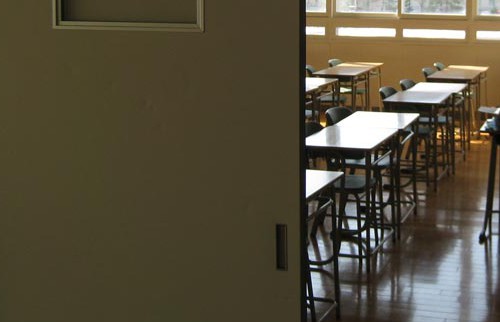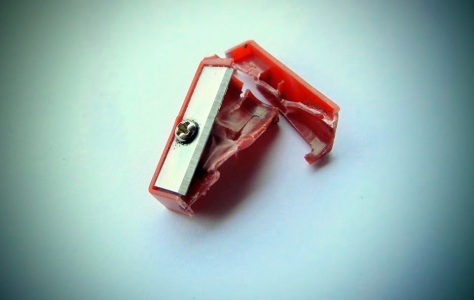All names are pseudonyms in this true story.
Danny goes to school
Danny’s young parents struggled to find steady jobs and income for their family. Both parents were still dealing with the trauma and stress from their own childhood relocations to the U.S.. Their families had left everything.
.

.
Danny’s family moved into a rough section of a major city, full of crime and drugs. He lived with two older siblings and Mom. Sadly, Danny’s dad (also named Danny) was violently murdered when Danny was very young. During Danny’s early years, he was told his dad was “away”.
Danny’s mother, Maria, left alone to support all three children, became despondent and desperate. Drinking and drugs seemed to dull her grief and stress. Her own attempts to survive financially led to her incarceration.
Danny was left without a normal relationship with either parent.
After his mother was released from prison, Danny and siblings lived with Maria for a time, in a deteriorating row house in another crime-ridden neighborhood.
Danny still believed his father was “away”.
Maria was preoccupied with trying to find work and restarting her life including training at the community college. The traumas of her husband’s murder and memories of childhood violence remained engulfing at times.
Danny’s older siblings had also often witnessed violence. They had a different father, who had taken custody while Maria was incarcerated. Reunited with their mother, they now bore the brunt of Maria’s frustration and stress. Danny often witnessed rage and terrifying violence between his mother and siblings, eventually leading to Maria’s decision to send them back to their dad.
Danny told me that he misses them both, especially his older brother. In his own mind, Danny is responsible for his separation from his siblings.

Wide Scope
Groundbreaking research into childhood trauma, was conducted by Centers for Disease Control (CDC) and Kaiser Permanente among 17,000 participants. The participants were suburban, middle-class, college-educated, mostly white, employed people with health insurance. Keep in mind: beautiful, suburban San Diego.
The research defined 10 categories of “adverse childhood experience” (ACE): physical, emotional, or sexual abuse, or physical or emotional neglect; and/or reside in households with members addicted to alcohol or drugs, or have a mental illness, or where children witness a mother being battered, or lose a parent to separation or divorce or incarceration.
The research findings were shocking: Two-thirds of participants had experienced at least one type of childhood adversity, and 22% had experienced 3 or more ACE categories!
Lifelong Impact
Three or more ACEs is significant because 3+ ACEs correlate with doubled risk of depression, severe obesity, drug abuse, lung disease, and liver disease. It triples the risk of alcoholism, STDs and teen pregnancy.
Three ACEs correlate with a 5X increase in attempted suicide, according to the data.
Increased ACEs correlated with earlier death by as much as 20 years.

ACE rates seem even higher in urban settings. Across our city, on average, a shocking 37% of the urban population has experienced 4 or more ACEs, according to the data. In our specific zip code cluster, the prevalence is a devastating. More than 45% with 4+ ACEs, essentially half of the children!

.
All alone with Danny now, his mother confided in him that his father was not “away”, but that he had been murdered. Confusion and grief tortured Danny .
It was at that point, eight years of age, Danny walked into my second grade classroom. Some days, at first, he seemed resilient.
Danny could share a great, toothy smile that stretched from ear to ear. That smile. It connected his ears to his always-bent-or-broken glasses. The layers of tape on the frames seemed to mangle the frames more than they helped. . .

Danny loved learning and sharing about his family’s culture. He also loved to run, sprinting, seemingly free as a bird, in those moments.
Danny was a talented artist too, at times loosing track of his surroundings while he created other worlds on paper.
On his good days, it was clear that Danny’s academic ability was on par or ahead of his classmates and his street smarts were well above average. Those were precious, rare days.
Underneath Danny’s smile was a learned mistrust of adults, and refusal to attach. Danny’s mother was using alcohol again, and he’d been told (and then physically reminded) that spilling a single drop any of Mom’s alcohol would result in immediate punishment: standing naked in a frightening, extended, icy-cold shower. He also hinted that “somebody’s” anger was why his glasses were broken or “lost” so regularly.
.
Deep Impact
Clearly, murder of his father was only one of Danny’s childhood trauma injuries.
Most of my students(6 to 10 years old) know someone who was murdered… Sadly, it’s not unusual. There is about a murder a day, on average, in our city. Most of the victims have children or families.
Many adults normalize the pain and fear of the injured child, thinking “they’ll get over it.”
Actually, it’s the opposite. Young children have fewer coping mechanisms and their immature brains are still developing. The impacts of trauma are greater on the still-developing brain.
Trauma impacts children, learning and schools, via its laser-like effects on the physical structure of the brain.
Unaddressed, the specific changes to brain architecture damage cognition.
Physical changes to brain architecture also impair ability to interpret social cues, predisposing children to hypervigilance, suspicion and hair-trigger defenses.
Specific changes to brain architecture impair children’s memory systems, their ability to think, to organize multiple priorities (“executive function”), and hence to learn, particularly literacy skills.
.

.
Danny’s mistrust created misunderstandings with other kids too. He spent recess alone as often as he joined in with others. Danny once told me that his favorite toy and game was “guns”… so that he would be practiced and ready when he was able to find his father’s killer…
Although Danny’s chronological age was only 8, his life was already overwhelmed with fear and loss. His hyper-vigilant scanning for any threat he might perceive in the classroom created a wall between Danny and others.
Often, Danny’s traumas could be retriggered by a classmate’s slight shift in position, or the most innocent comment or look. It was impossible to anticipate. Sometimes Danny arrived at school already triggered by events at home or along the way. When his fears were triggered, Danny could go off track quickly with a loud, nervous laugh, or an equally disruptive threat yelled to someone across our classroom. Then he would rip up his classwork, and throw his books, dump his desk, and often make a run for the hallway, with angry tears, screaming “f___ you”. His classmates watched, gripped in fear. Danny didn’t know it, but 9+ other children in the same room had similar life stories filled with trauma.
At other times, Danny kept his panic hidden, emotionally “dissociating”, maybe drawing or reading something off-topic, but experiencing the same fear state. More on dissociating at “José” HERE‘ and “Roberto” HERE.
At least twice during his dissociating, Danny quietly, but tensely snapped small plastic pencil sharpeners. When confronted, he quickly put a jagged piece, on his tongue and when further approached, he swallowed. On another occasion he threatened to swallow the loose blade…
Maria was informed, and the seriousness of Danny’s state was clearly explained. Her initial responses were to claim that Danny was just having a bad day and to inflict corporal punishment at home. “It will go away”, Maria claimed . . .
.

.
Meanwhile, our school district did not have other spaces or adults available to allow Danny to de-escalate. I could not leave the other 25+ children to be with Danny. Our counselor was on long-term leave with no replacement. Our school was not staffed, nor funded with a full-time nurse.
Danny’s story is stunning, but it is not NOT an aberration. In our classroom there were at least 9 other children with 3+ categories of trauma, who were equally often triggered, often by each other. See Failing Schools or Failing Paradigm?
The children are not sick or bad, they are injured.
It is morally wrong for adults to normalize childhood fear, injury and ongoing trauma (no matter who is to blame).
As educators, we cannot immediately prevent the injury, pain or chronic trauma. But we can fulfill our mission in public schools to educate all who come in through our doors.
We need strategies, we need training, we need support and we need resources.
.
Toward Trauma-Informed Schools
Equal access to education is physiologically impossible for children in “survival” mode.
The lead ACE investigators documented many impacts of 3+ ACEs in the presentation “Connecting a Developmental Lens to the Health of Society”(especially pgs. 50,51). Classroom-specific impacts of not addressing the trauma included worse health, more frequent suspension, lower standardized test scores, more frequent designation as special education students, 250% more likely to be retained in grade.
A trauma-informed education paradigm is about relationships and processes leading to ‘safety’ and equal access. It begins with: a) explicit acknowledgement of childhood trauma and attending to injuries — whether those injuries are physical, emotional and/or neurological, b) on-going training and supporting teachers and staff school-wide, c) creating ‘safety’ school-wide, d) screening students, to include those who are quietly dissociating.
Adults have accountability for training to become trauma-informed. Adults have responsibility to identify and address trauma in children. Adults have accountability to accomplish the above promptly to protect the child from permanent damage from chronic traumatic stress.
When trauma-impacted children are not identified and supported appropriately, they do not perform on standardized tests at the same level as others. Yet, to receive funding from various sources, our state and our district, continue to be required and accountable to evaluate the children (like Danny) solely as a conglomeration of “standardized test” scores.
.

.
Away from trauma competency
Most “reformers” have not spent time in our classrooms. They are blindly oblivious to the child’s injuries, continuing fears and stress. Classroom impacts are not acknowledged.
The epidemic of childhood trauma is widely ignored in reformers’ misfocused ‘prescriptions’ for their “factory model” of educating children.
Their ill-advised approach is so very unsafe in many ways for so many of our children.
Ignoring, or not caring, Education “Reformers” continue to push and push for an education “factory” with more and more ‘standardization’, synchronized timing and more testing.
“The test” does not discriminate trauma-impacted children from others. Instead, the test ignorantly masses together our epidemic of 22% to 45+%, trauma-impacted children with all other children into one “score” for the school, and then misleadingly compares the school’s score to other schools.

‘Reformers’ push on, effectively bullying the children, even though the test content itself is in question.
They “bully”, even though the data says that enduring the test and its high stakes adds even more trauma to already very precarious emotions for Danny and many of his classmates.
.
Becoming active
I choose to confront the bully. Join me.
All children do have a right to be safe, in all ways, when they go to school and they have a right of equal access to their education. Is your school trauma-informed?

- If you’re not trauma-informed , read here, or research childhood-trauma here or seek training here.
- Watch a 3 minute video on the research here, or watch a 5 minute overview video here.
- Listen to a child’s story. Go back to the child; listen again.
- Read more on Danny’s Memory HERE.
- Be part of a group (or start one) which invests one-to-one with a group of trauma-impacted children.
- Help raise awareness of trauma in your school and community. “Share” this blog broadly. Share shorter pieces in the “Nowhere to Hide” series at LucidWitness.com
- Learn about political strategies in MA, WA and San Francisco.
- Vote.
Course corrections must all start with the child as the center, the priority.

Now, when I see a child with a small, plastic pencil sharpener, I still trigger…
“Peek Inside a Classroom” is a series about childhood trauma in public education. Another part, “Peek Inside a Classroom: Jasmine:“ is here. “Jasmine” defends against childhood trauma more aggressively than Danny. “José, at “Peek Inside a Classroom; José” uses a detached, dissociating defense, which can be confusing.
Also see: Peek Inside a Classroom: Effective Education Reform(with Dr. Sandra Bloom, M.D.)
.
.
Look for another series of shorter vignettes about developmental trauma,“Nowhere to Hide”, on LucidWitness.com .
.
“Nowhere to Hide” series overview
click HERE

“Nowhere to Hide” series links
Each separate, individual article in the series focuses on a single component of the workings of developmental trauma, via real life examples in short “60 second” soundbites, akin to “Public Service Announcements” (PSAs). They are designed for sharing in social media networks to grow public awareness.
Trigger warning:
The children’s experiences in the vignettes are unvarnished. Their traumatic responses may trigger painful memories.
.
“PSA” Links for social media
.
Nowhere to Hide: Maria; Fight, flight or freeze

Nowhere to Hide: Andre’s Fear; What are Adverse Childhood Experiences?

Nowhere to Hide: Jamar’s Hyper-arousal

Nowhere to Hide: Roberto’s Dissociation

Nowhere to Hide: Danny’s Memory

Nowhere to Hide: Ashley’s “Normal” Education? Part 1

Nowhere to Hide: Ashley’s “Normal” Education? Part 2

More to come
.
“Like” us at “Trauma-Informed Pedagogy” on Facebook
.
Please share a PSA link to help grow public awareness of the impacts of developmental trauma. There are so many of us who’ve never heard of the overpowering life-long impacts.
.
“Peek Inside a Classroom” series overview
The second original series, “Peek Inside a Classroom”, provides much more detailed looks inside my classroom, primarily focused on specific students: Jasmine, Danny and José.
Other children are captured in broader looks at education reform concepts: “Failing Schools or Failing Paradigm?” and “Effective Education Reform”, co-authored with Sandra L. Bloom, M. D..
.
“Peek Inside a Classroom” series links
.
Peek Inside a Classroom: Jasmine

Peek Inside a Classroom: Danny


Peek Inside a Classroom: Failing Schools or Failing Paradigm?
Peek Inside a Classroom: Effective Education Reform (with Sandra Bloom, M.D.)
.
“Click for Resources…” series overview:
“Click for Resources” posts are the theory and research behind the narrative posts in “Nowhere to Hide” and “Peek Inside a Classroom”.
Each post in “Click for Resources “ is divided in three parts:
1) general press articles,
2) Research Journals or academic papers
3) social media, often with video.
.
“Click for Resources” series links:
.
1. Adverse Childhood Experience (ACE) Studies: CLICK HERE
2. Impacts of Childhood Trauma: Overview CLICK HERE
Click for Resources: Social Media on Impacts of Childhood Trauma
Click for Resources: Journal Articles on Impacts of Developmental Trauma
3. Trauma-Informed Schools CLICK HERE

4. Trauma-Informed Social Services CLICK HERE

5. Trauma-Informed Juvenile Justice CLICK HERE

6. Trauma-Informed Public Policy CLICK HERE

7. Childhood Trauma Training and Tools CLICK HERE

8. Book and Publication selections CLICK HERE

9. #800 phone numbers CLICK HERE

Developmental trauma, still “the elephant in the [class] room” for many adults.
.
“Like” us at “Trauma-Informed Schools” on Facebook
.









Bravo Daun. You’ve boiled off a lot of distractions to get to the center of the issue: the child. The child then becomes an adult. The child then has children. His or her children go to schools that are run by other adults who either look away or who don’t. Thank you for clearing the air.
LikeLiked by 1 person
Daun Kaufman told Danny’s story at hearings on standardized testing to the Education Committee of Philadelphia City Council on November 19th.
https://vimeo.com/112601521
LikeLiked by 1 person
As a middle school teacher, it wasn’t until I adopted two trauma affected children that I looked around my classroom and thought, “Wow, so many of these kids are dealing with trauma affected brains.” I’d been sympathetic to difficult home life situations, but I didn’t really get how it affects attachment, learning, memory, etc. I don’t think enough teachers know that it’s not just a matter of role models and habits, but actual brain chemistry changes. Thank you for highlighting this.
LikeLiked by 1 person
Thank you so much for caring (and sharing) Wendy !
LikeLike
Fairly recent research has revealed that long-term exposure to the stress hormone cortisol, particularly in early childhood, actually causes physical changes in the brain. Those changes have been found in two specific areas of the brain: the structures responsible for the “fight or flight” response, and for experiencing pleasure. Specifically, the first structure becomes abnormally large in size and the second becomes abnormally small.
This produces a person who always perceives danger looming just ahead, and who requires significantly more (of anything) to experience the same level of pleasure as a person whose brain has not been so affected. And these changes are permanent!
The ramifications are frightening. Children whose brains have been, in effect, “deformed” by the ongoing trauma in their lives grow up to be adults who are always in crisis and who desperately overindulge–in drugs or alcohol, in people-pleasing actions, in food, in sexual behavior, in spending, and even in supposedly appropriate endeavors such as work–in an attempt to feel a minimal level of pleasure. When these folks are referred for counseling, the assumption is that they have developed these problems in a flawed attempt to cope with their life circumstances, and have the ability to simply change their behavior, through cognitive and/or pharmaceutical interventions. Since the research findings are fairly recent, we have not yet developed appropriate and effective ways of helping these individuals find some relief from their torments.
Meanwhile, the vast majority of them will have children, who are almost guaranteed to live in an environment which exposes their brains to toxic levels of cortisol, and the problem grows exponentially. We need to invest in families, and in the lives of children, before it is too late!
LikeLiked by 1 person
Thank you so much for sharing Luci !
You are right on target about trauma in developmental years. There are changes to the physical brain, which if left unaddressed, impair the child, lifelong, until reaching early death….
Let’s add even more urgency to your point regarding the depth of the issue for children with still-developing brains.
Add the shocking, massive numbers involved. Our own Department of Justice, and the Center for Disease Control and even some Surgeon Generals use terms like “epidemic”, and “national crisis”. Specific studies identified rates between 22% and 45+% of our children are experiencing three or more categories of trauma!
Then add to that point, the core concept of “Public Education” is that we serve ALL children. We need to be waving the flag and declaring loudly and clearly that we need teacher training, strategies, resources and support…
NOW.
We have been wasting so much time on impotent Education “Reform”, trying to solve a falsely generated furor over test scores. Meanwhile the children — who should be at the center of reform — continue to suffer. And meanwhile billions of our dollars are being poured into naive program “buckets” with gaping trauma holes in the bottom.
There are more Links to the neuroscience and to the Public Health issues at the same LucidWitness blog at the post about “Jasmine” here “Peek Inside a Classroom” (“Jasmine”) and at “Jose” here “Peek Inside a Classroom” (Jose) and at “Common Sense” here “Common Sense: Defending Childhood” .
LikeLike
I’m long in the classroom and that was still a haunting bit to read.
LikeLike
Thank you for reading so intently, “denisian”. I must apologize though. I’m sorry, “haunting” wasn’t my goal… I am hoping “haunting”, after some time and processing, may lead to sharing (help build awareness) and action.. 🙂 . Either way, Thank you for your investment in “Danny”.
LikeLike